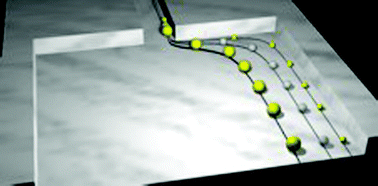Pinched flow fractionation devices for detection of single nucleotide polymorphisms†
Abstract
We demonstrate a new and flexible microfluidic based method for genotyping single

* Corresponding authors
a
DTU Nanotech-Department of Micro and Nanotechnology, Technical University of Denmark (DTU), Building 345east, Oersted Plads, Lyngby, Denmark
E-mail:
ak@mic.dtu.dk
Fax: +45 4588 7762
Tel: +45 4525 6331
b Department of Haematology, Herlev Hospital, University of Copenhagen, Herlev Ringvej 75, Herlev
We demonstrate a new and flexible microfluidic based method for genotyping single

 Please wait while we load your content...
Something went wrong. Try again?
Please wait while we load your content...
Something went wrong. Try again?
A. V. Larsen, L. Poulsen, H. Birgens, M. Dufva and A. Kristensen, Lab Chip, 2008, 8, 818 DOI: 10.1039/B802268B
To request permission to reproduce material from this article, please go to the Copyright Clearance Center request page.
If you are an author contributing to an RSC publication, you do not need to request permission provided correct acknowledgement is given.
If you are the author of this article, you do not need to request permission to reproduce figures and diagrams provided correct acknowledgement is given. If you want to reproduce the whole article in a third-party publication (excluding your thesis/dissertation for which permission is not required) please go to the Copyright Clearance Center request page.
Read more about how to correctly acknowledge RSC content.
 Fetching data from CrossRef.
Fetching data from CrossRef.
This may take some time to load.
Loading related content
